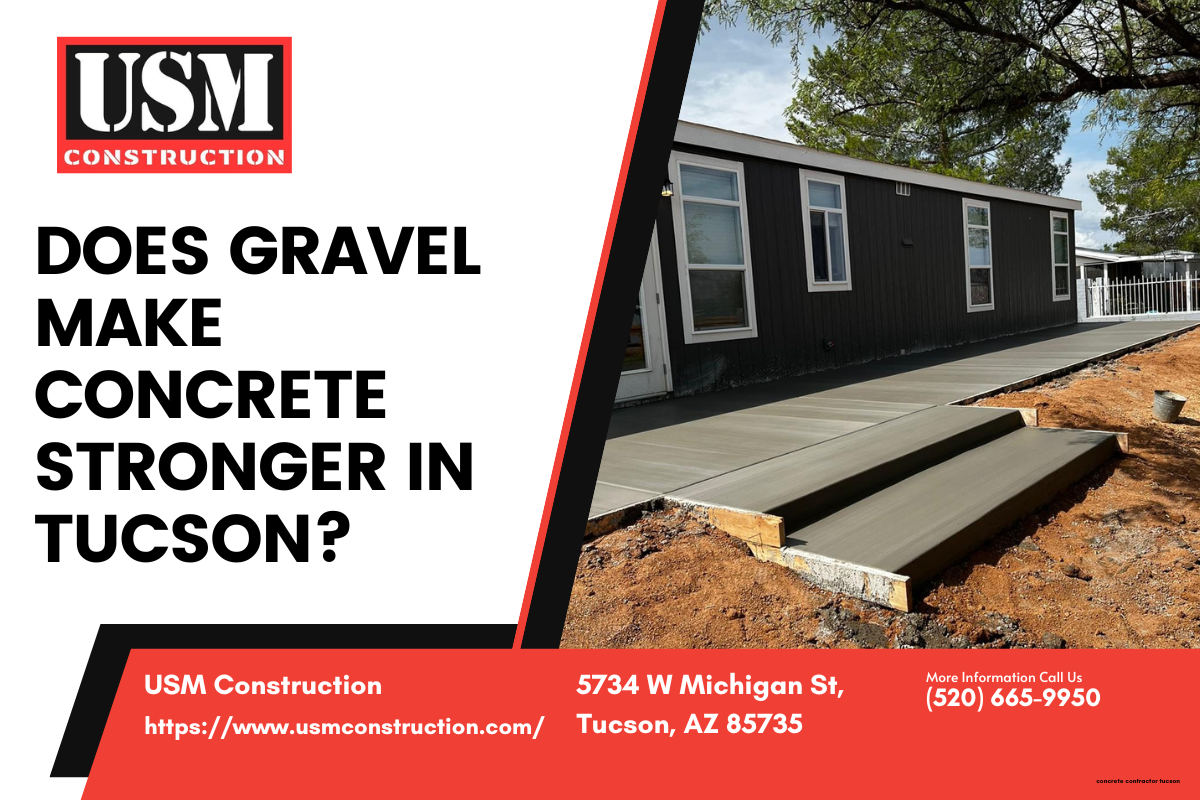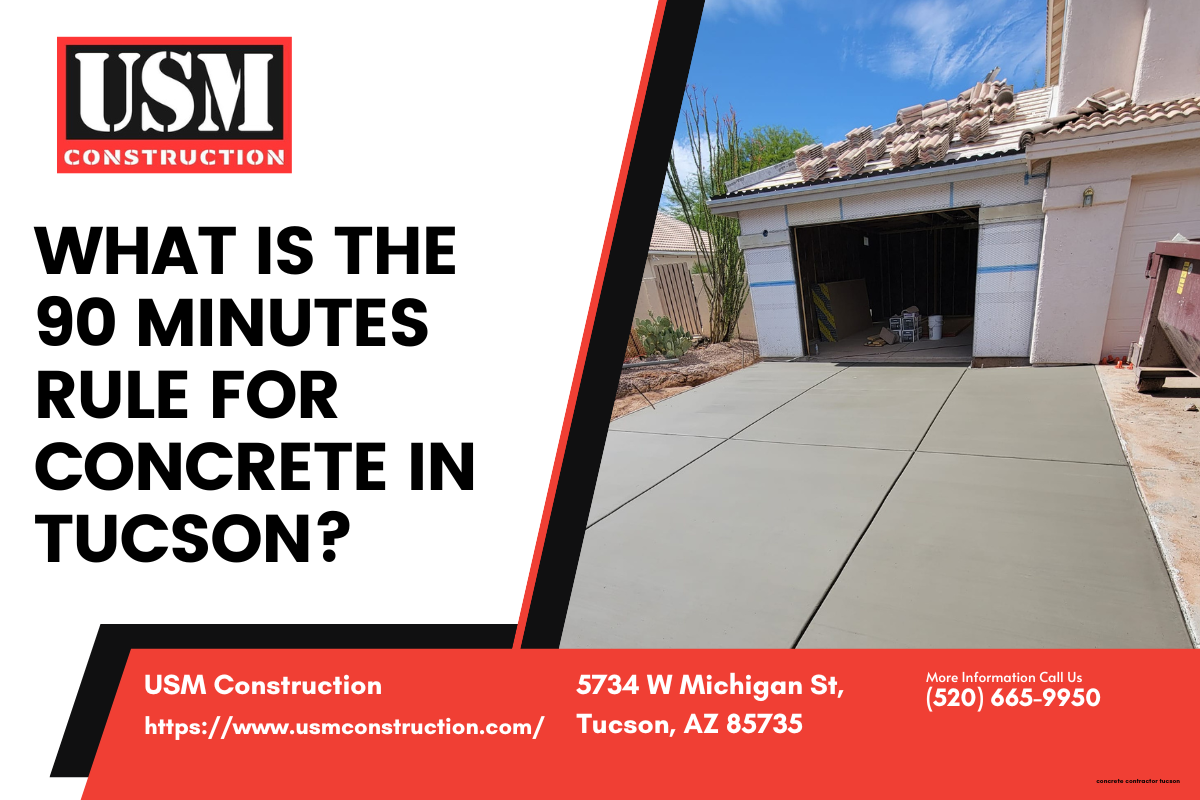TABLE OF CONTENTS
Choosing the right concrete contractor in Oro Valley involves more than comparing quotes and checking online reviews. For a project to truly last, you must select a team that understands how to conquer the Sonoran Desert's three greatest threats: punishing summer heat, destructive monsoon storms, and the notoriously unstable caliche soil hiding just beneath the surface.
The Foundation of a Good Decision: Standard Vetting vs. Environment-Specific Vetting
Every responsible property owner knows the basics of hiring a contractor. You verify they are a licensed and insured concrete company in Oro Valley, you read their reviews, and you look at their portfolio. This is the essential first step, a baseline for even considering a company for your project. You can, and should, always verify a contractor's status directly with the state's registrar.
However, in a region with such a demanding climate, this standard due diligence is simply not enough. The desert is unforgiving. A concrete driveway installation in Oro Valley that would be straightforward in a milder climate can fail within a year if the contractor doesn't employ specialized, environment-specific techniques. The difference between a beautiful, lasting investment and a cracked, heaving disaster lies in asking deeper, more technical questions. Here’s a breakdown of what to look for in a concrete contractor.
Focusing on the right column of this chart is how you move from simply hiring a contractor to partnering with a genuine expert in local conditions.
Threat #1: Conquering Extreme Heat with a 'Pre-Dawn Pour' Strategy
The intense, dry heat of the Sonoran Desert is concrete's number one enemy during placement. When freshly mixed concrete is exposed to high ambient temperatures, low humidity, and direct sun, the water in the mix evaporates far too quickly. This can lead to a host of problems, including plastic shrinkage cracking, reduced ultimate strength, and poor surface quality. In fact, the chemistry is stark: for every 18°F (10°C) increase in concrete temperature, the time available to place and finish the concrete is reduced by about half according to the Cement Association of Canada. An inexperienced contractor who treats a summer pour like any other is setting your project up for failure.
Timing is Everything: Why Professionals Start Before Sunrise
Experienced concrete contractors in Oro Valley understand this threat intimately. That’s why the "pre-dawn pour" is a non-negotiable part of our process during the hot months. By scheduling the concrete slab pouring for the coolest part of the day—typically between 3 a.m. and 6 a.m.—we ensure the concrete is placed onto a cooler sub-base and has time to begin its initial set before the sun becomes a significant factor. This single strategic decision dramatically increases the chances of a flawless, durable finish.
More Than Just Water: The Science of Hot-Weather Mix Designs
You may have heard of basic mix ratios like the "4-2-1 rule" (4 parts aggregate, 2 parts sand, 1 part cement). While these serve as simple explanations, they are dangerously oversimplified for professional work in demanding climates. A true professional doesn't guess; they order a precisely engineered mix from the plant. When ordering concrete for a hot-weather pour, a professional contractor will specify critical components like:
- Set-Retarding Admixtures: Chemicals that slow down the chemical reaction of hydration, giving the concrete finishers in Oro Valley more time to place and work the material before it gets too hard.
- Water-Reducing Admixtures: These allow for a workable, fluid mix with less water. Less water means less evaporation and a stronger, denser final product with fewer shrinkage cracks.
- Specific PSI Strength: Requesting the exact Pounds per Square Inch (PSI) required for the application, whether it's a 3000 PSI patio or a 4000 PSI commercial foundation.
The Critical Curing Process: Locking in Moisture for Maximum Strength
Pouring the concrete is only half the battle. Curing is the process of maintaining adequate moisture and temperature in the concrete for a period of time so it can achieve its designed strength. In the desert, this is paramount. An expert team will use methods like applying a liquid membrane-forming curing compound immediately after finishing. This invisible shield seals the surface, locking in the necessary moisture for the hydration process to complete successfully, ensuring the slab is as strong and crack-resistant as possible.
Threat #2: Monsoon-Proofing Your Project Against Sudden Downpours
The summer monsoon season is a defining feature of our region. While the rain is welcome, the intensity of the downpours can be devastating to poorly prepared sites. During the monsoon season, which officially runs from June 15 to September 30, the area can receive over half of its average annual rainfall of about 12 inches as noted by local water authorities. A sudden, powerful storm can wash away an improperly prepared sub-base, cause soil erosion around the edges of a new slab, and lead to water pooling against a home's foundation.
The Unseen Hero: Proper Sub-Base Preparation
What’s underneath your concrete is just as important as the concrete itself. Before a single drop of concrete is poured, a top-tier contractor will dedicate significant time to preparing the sub-base. This involves:
- Proper Compaction: Using professional compaction equipment to create a dense, stable, and uniform base that will not settle over time.
- Moisture Conditioning: Lightly moistening the sub-grade before the pour. Pouring onto a bone-dry, dusty base will cause the ground to wick essential water out of the bottom of the concrete mix too quickly, weakening it from below.
- Using Quality Fill: Bringing in and compacting appropriate aggregate base course (ABC) material to create a solid foundation for the concrete to rest on.
Directing the Deluge: Strategic Grading and Drainage
Professional concrete contractors are also experts in earth-moving. For any concrete flatwork, from a simple walkway to a large patio, the contractor must create a subtle but effective slope (or grade) to direct rainwater away from structures. A properly graded concrete patio installation will ensure water flows away from your home’s foundation, preventing water intrusion and potential damage. This foresight is a hallmark of an experienced team and is critical for long-term performance.
Threat #3: The Caliche Question—Your Project's Biggest Long-Term Risk
Perhaps the most significant and misunderstood challenge for construction in this region is caliche. Caliche is a hard, naturally-cemented soil horizon common in arid regions, composed chiefly of calcium carbonate (CaCO3) that cements together other materials like gravel, sand, and clay according to the Arizona Geological Survey. It can be as hard as concrete, making excavation difficult. More dangerously, pockets and layers of clay within the caliche are expansive—they swell significantly when wet and shrink when they dry.
This expansion and contraction cycle exerts immense pressure on anything built on top of it, from Oro Valley residential foundation installations to simple sidewalks. This phenomenon is no small matter; expansive soils cause an estimated $9 billion in damages to houses, other buildings, roads, and pipelines in the U.S. each year reports Concrete Construction magazine—more than twice the combined damage from many natural disasters.
The Right Approach: Excavation, Removal, and Engineered Fill
A contractor who simply pours concrete on top of unprepared caliche is guaranteeing future failure. The only correct method is to address the soil itself. This is the single most important factor for long-term stability.
- Over-Excavation: The contractor must dig out the caliche and expansive soil to a specified depth below the planned concrete structure.
- Removal: The problematic soil must be hauled away from the site.
- Engineered Fill: The excavated area must be backfilled with non-expansive, structural fill material, which is then placed in "lifts" (layers) and properly moisture-conditioned and compacted to create a stable, predictable base.
This process is an absolute necessity for any structural project, including Oro Valley commercial building foundations and new home foundations, and is a best practice for any significant flatwork.
Foundation Expertise: Building for Soil Movement
Local foundation experts in Oro Valley AZ understand that even with the best soil preparation, some ground movement is inevitable. That's why specialized foundation designs are used. Post-tension slabs, which contain tightened steel cables running through the concrete, are engineered to resist and float over soil movement, making them a superior choice for long-term structural integrity in areas with expansive soils.
Asking Smarter Questions: Your Vetting Checklist for Desert-Ready Concrete
Now that you understand the threats, you can arm yourself with the right questions to ask a concrete contractor before hiring. Moving beyond "Are you insured?" will reveal a contractor's true level of local expertise. When you compare concrete contractor quotes in Oro Valley, use these questions to guide your conversation:
- Regarding Heat: "What is your specific hot-weather concreting plan? What time of day do you schedule pours in July? What admixtures do you plan to use for my project?"
- Regarding Water: "Can you describe the sub-base preparation process? How will you ensure proper grading and drainage to protect my foundation?"
- Regarding Soil: "What is your standard procedure if you encounter caliche on my property? Do you include over-excavation and engineered fill in your base quote?"
- Regarding Expertise: "What type of foundation do you recommend for new construction in this area and why? Can you show me examples of similar projects you've completed locally?"
A contractor who can answer these questions confidently and in detail is one who understands the unique challenges of building in this environment.
Making the Right Choice for Your Needs
The "best" concrete contractor isn't a one-size-fits-all answer. The right choice depends on your specific project, priorities, and risk tolerance. Here’s how different types of clients might weigh these factors.
For the New Home Builder
Your primary concern is the long-term structural integrity of what is likely the biggest investment of your life. For you, a contractor's deep expertise in foundations and their plan for mitigating caliche is the most critical factor. The cost of comprehensive soil remediation and a properly engineered post-tension foundation is marginal compared to the potential cost of future foundation repair. You need a partner who is among the top concrete foundation companies, not just a low bidder.
For the Discerning Homeowner
You're adding a high-value feature like a decorative stamped concrete patio, a concrete pool deck, or a large RV pad. Your focus is on durability and aesthetics. You want to avoid cracks, spalling, and heaving that will ruin the look of your investment. You should prioritize a contractor who can speak in detail about their hot-weather pouring and curing techniques, as these are essential for a perfect, lasting surface finish. Ask to see their Oro Valley concrete company portfolio for examples of decorative concrete that have stood the test of time.
For the Pragmatic Property Manager
You are responsible for common areas like parking lots, sidewalks, and curbs. Your priorities are longevity, safety, and minimizing long-term maintenance costs. A cracked sidewalk is a trip hazard and a liability. You need a contractor who excels at sub-base preparation and drainage to ensure the flatwork remains stable and safe for years. Their ability to handle the entire scope, from concrete removal and replacement to new installation, provides efficiency and value.
Ultimately, the best contractors for projects in the Sonoran Desert are those who don't fight the environment, but intelligently prepare for it. Their expertise is your best defense against heat, water, and soil. For a project built to withstand the unique challenges of our climate, trust the local, family-owned and operated experts. USM Construction LLC is a fully licensed and insured team of concrete contractors serving Oro Valley, Tucson, and the surrounding areas, with a proven process for delivering durable, high-quality results. Contact us today for a comprehensive evaluation and a free, no-obligation estimate for your project.


























